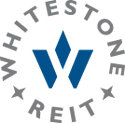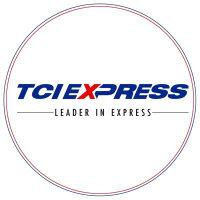
High Liner Foods Inc
TSX:HLF


| US |

|
Johnson & Johnson
NYSE:JNJ
|
Pharmaceuticals
|
| US |

|
Berkshire Hathaway Inc
NYSE:BRK.A
|
Financial Services
|
| US |

|
Bank of America Corp
NYSE:BAC
|
Banking
|
| US |

|
Mastercard Inc
NYSE:MA
|
Technology
|
| US |

|
UnitedHealth Group Inc
NYSE:UNH
|
Health Care
|
| US |

|
Exxon Mobil Corp
NYSE:XOM
|
Energy
|
| US |

|
Pfizer Inc
NYSE:PFE
|
Pharmaceuticals
|
| US |

|
Palantir Technologies Inc
NYSE:PLTR
|
Technology
|
| US |

|
Nike Inc
NYSE:NKE
|
Textiles, Apparel & Luxury Goods
|
| US |

|
Visa Inc
NYSE:V
|
Technology
|
| CN |

|
Alibaba Group Holding Ltd
NYSE:BABA
|
Retail
|
| US |

|
JPMorgan Chase & Co
NYSE:JPM
|
Banking
|
| US |

|
Coca-Cola Co
NYSE:KO
|
Beverages
|
| US |

|
Walmart Inc
NYSE:WMT
|
Retail
|
| US |

|
Verizon Communications Inc
NYSE:VZ
|
Telecommunication
|
| US |

|
Chevron Corp
NYSE:CVX
|
Energy
|
Utilize notes to systematically review your investment decisions. By reflecting on past outcomes, you can discern effective strategies and identify those that underperformed. This continuous feedback loop enables you to adapt and refine your approach, optimizing for future success.
Each note serves as a learning point, offering insights into your decision-making processes. Over time, you'll accumulate a personalized database of knowledge, enhancing your ability to make informed decisions quickly and effectively.
With a comprehensive record of your investment history at your fingertips, you can compare current opportunities against past experiences. This not only bolsters your confidence but also ensures that each decision is grounded in a well-documented rationale.
Do you really want to delete this note?
This action cannot be undone.

| 52 Week Range |
13.18
18.95
|
| Price Target |
|
We'll email you a reminder when the closing price reaches CAD.
Choose the stock you wish to monitor with a price alert.

|
Johnson & Johnson
NYSE:JNJ
|
US |

|
Berkshire Hathaway Inc
NYSE:BRK.A
|
US |

|
Bank of America Corp
NYSE:BAC
|
US |

|
Mastercard Inc
NYSE:MA
|
US |

|
UnitedHealth Group Inc
NYSE:UNH
|
US |

|
Exxon Mobil Corp
NYSE:XOM
|
US |

|
Pfizer Inc
NYSE:PFE
|
US |

|
Palantir Technologies Inc
NYSE:PLTR
|
US |

|
Nike Inc
NYSE:NKE
|
US |

|
Visa Inc
NYSE:V
|
US |

|
Alibaba Group Holding Ltd
NYSE:BABA
|
CN |

|
JPMorgan Chase & Co
NYSE:JPM
|
US |

|
Coca-Cola Co
NYSE:KO
|
US |

|
Walmart Inc
NYSE:WMT
|
US |

|
Verizon Communications Inc
NYSE:VZ
|
US |

|
Chevron Corp
NYSE:CVX
|
US |
This alert will be permanently deleted.
High Liner Foods Inc
High Liner Foods, Inc. engages in the processing and marketing of prepared and packaged frozen seafood products. The company is headquartered in Lunenburg, Nova Scotia and currently employs 1,102 full-time employees. The firm produces a range of products from breaded and battered items to seafood entrees, which are sold to North American food retailers and foodservice distributors. The Company’s retail channel includes grocery and club stores and its products are sold throughout the United States and Canada under the High Liner, Fisher Boy, Mirabel, Sea Cuisine and Catch of the Day labels. The foodservice channel includes sales of seafood that is usually eaten outside the home and its branded products are sold through distributors to restaurants and institutions under the High Liner, Mirabel, Icelandic Seafood and full prescribing information (FPI) labels. The company owns and operates over three food-processing plants located in Lunenburg, Nova Scotia (N.S. ), Portsmouth, New Hampshire and Newport News, Virginia.

High Liner Foods, Inc. engages in the processing and marketing of prepared and packaged frozen seafood products. The company is headquartered in Lunenburg, Nova Scotia and currently employs 1,102 full-time employees. The firm produces a range of products from breaded and battered items to seafood entrees, which are sold to North American food retailers and foodservice distributors. The Company’s retail channel includes grocery and club stores and its products are sold throughout the United States and Canada under the High Liner, Fisher Boy, Mirabel, Sea Cuisine and Catch of the Day labels. The foodservice channel includes sales of seafood that is usually eaten outside the home and its branded products are sold through distributors to restaurants and institutions under the High Liner, Mirabel, Icelandic Seafood and full prescribing information (FPI) labels. The company owns and operates over three food-processing plants located in Lunenburg, Nova Scotia (N.S. ), Portsmouth, New Hampshire and Newport News, Virginia.
Quarter Miss: High Liner Foods' Q3 results came in below management expectations due to persistent macro headwinds, including inflation and tariffs.
Revenue Growth: Sales increased 8.6% year-over-year to $248.6 million, driven by higher pricing despite a decline in sales volume.
Margin Pressure: Gross margin fell to 18.6% from 21.1% last year, largely due to increased raw material costs, tariffs, and temporary impacts from acquired inventory.
Adjusted EBITDA & EPS Decline: Adjusted EBITDA dropped 29.3% to $15.2 million and diluted EPS fell to $0.16 from $0.61.
Inventory Build: Inventory rose significantly due to opportunistic buying and the Conagra Brands acquisition; management views this as a margin opportunity for 2026.
Integration Progress: Integration of Mrs. Paul’s and Van de Kamp’s brands is ahead of schedule, supporting sales and distribution gains.
Dividend Increase: Dividend was modestly increased, signaling management’s confidence in the business despite current challenges.
Outlook: Management expects gradual improvement in Q4 but does not anticipate full-year adjusted EBITDA growth, with more meaningful recovery targeted for 2026.


















































